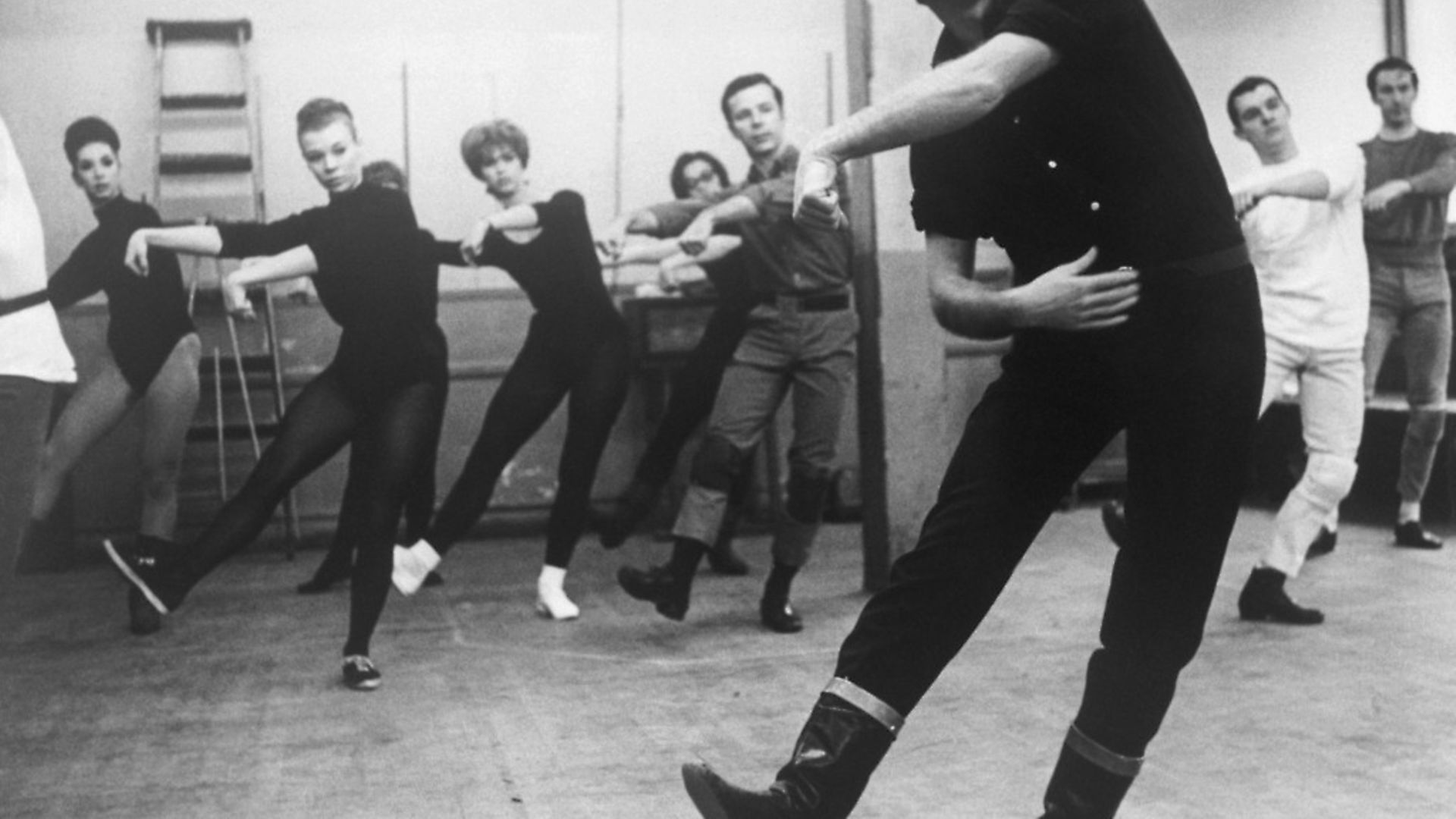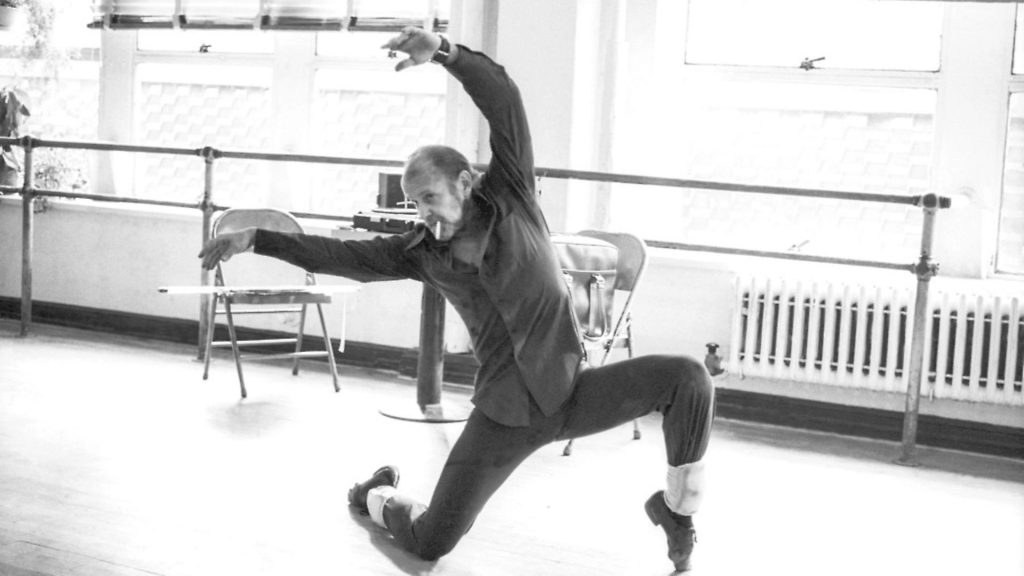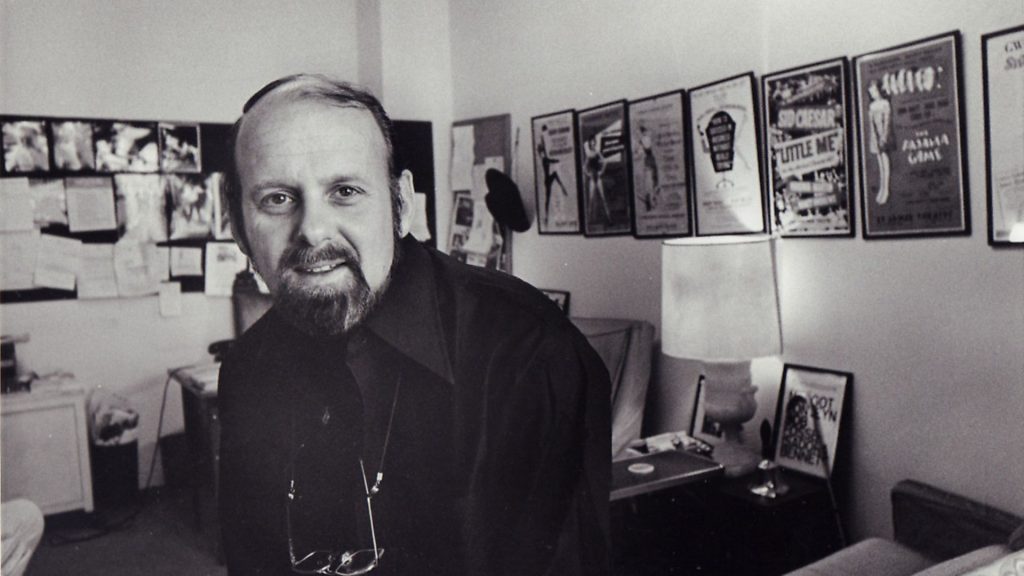
The new television series Fosse/Verdon gets to the dark heart of complex and controversial film director Bob Fosse, a man drawn to the seamy, seedy side of showbusiness. RICHARD LUCK reports.

There’s a moment in the Emmy-nominated series Fosse/Verdon where the brilliant, bullying Bob Fosse tells his dance troupe: “I want you to make the audience uncomfortable.”
This feat was something the choreographer/director accomplished with great success throughout his career. And as his wife and muse Gwen Verdon might agree, it was a defining characteristic of Fosse’s relationship with the many, many women in his life.
The story of the relationship between meticulous dancer, director and choreographer Bob Fosse and Gwen Verdon, the celebrated dancer/actress who was both his muse and his wife, the show charts the pair’s triumphant assault on Broadway, a feat that made Verdon but ultimately broke her husband.
Featuring a sensational performance from Michelle Williams as the indomitable Verdon, the programme also showcases career-best work from Sam Rockwell as the compelling, compulsive, sometimes even repulsive Fosse. A martinet in leather boots, Rockwell’s Fosse drinks, smokes, does drugs and f**ks like all four things are about to go out of style.

A dead-ringer for the director with his wispy facial hair and evaporating hairline, it’ll come as no surprise if the actor adds an Emmy to the Oscar, Golden Globe and BAFTA he won for Three Billboards Outside Ebbing, Missouri.
Of course, there’s an irony attached to any Fosse memoir, since the man dedicated much of his time in Hollywood to putting his life up on the big screen.
Transferring from Broadway to Tinsel Town with an ease unseen since Elia Kazan, Fosse’s movie career might have begun with a well-executed but unwanted adaptation of his hit stage show Sweet Charity (1967) but he soon became the cock of the walk courtesy of Cabaret (1972).
Another stage musical – albeit one Fosse hadn’t helped bring into being – the story of Berlin’s decadent Kit Kat Club and its fate following the emergence of Nazism might seem unlikely subject matter for a box-office smash. Fosse, however, had literally grown up in burlesque clubs and so knew how to pull in the audience, not by downplaying the seediness but by putting in front and centre. The recipient of eight Academy Awards including Best Film and Best Director, Cabaret gave Fosse the freedom to do as he pleased as far as motion pictures were concerned.
As those who have seen the final episode of Fosse/Verdon will know, what our hero really wanted to do was put himself in the picture. All That Jazz (1979) is ‘The Bob Fosse Story’ in everything but name. Roy Scheider is Joe Gideon, a womanising drug addict who choreographs the odd hit show when not too occupied with his other interests. Leland Palmer, meanwhile, essays Audrey Paris, a thinly disguised Gwen Verdon. That Fosse contemplated playing Gideon himself is revealing, as is the fact Bob asked Gwen to be on hand throughout the shoot. That All That Jazz prefigured Fosse’s death – from a heart attack in 1987 in Verdon’s arms – is positively unnerving.
Death and fame – these subjects dominate Fosse’s later films. Indeed, All That Jazz can be seen as the second part of a loose trilogy of Fosse pictures about the seamier side of showbusiness. In 1974, the director unleashed Lenny, a fascinating, warts and all study of the rise and decline of stand-up legend Lenny Bruce.
Shot in black-and-white and with a real documentary feel, Lenny couldn’t have been further removed from the kitsch and colour of Cabaret. In telling the story of a man laid low by his addictions to women, heroin and telling the truth, the biopic had plenty in common with both All That Jazz and Fosse’s final film, 1983’s Star 80.
Ah, Star 80 – there are good reasons why it barely features in Fosse/Verdon: it receives the scantest of mentions in the show’s final episode, Providence. That dancing is all but absent from the movie might go some way to explaining why it’s ignored. Then there’s the simple fact that film is so unremittingly bleak, it’s unlikely television audiences could stomach the story of its making.
Inspired by Teresa Carpenter’s “Death Of A Playmate”, a Pulitzer Prize-winning article for The Village Voice, Star 80 recounts the tragic tale of Dorothy Stratten, a Canadian actress and model who became a figurehead for Hugh Hefner’s Playboy empire. Naturally shy and modest, Dorothy was thrust towards fame by her manager/husband Paul Snider, a club promoter who yearned for success but had no immediately apparent way to attain it.
By the time Dorothy was chosen as 1980’s Playmate Of The Year, she had taken up with film director Peter Bogdanovich (The Last Picture Show, Paper Moon). Incensed, Snider embarked on a course of action that resulted in the death of his wife by the foulest means imaginable and his own suicide.
A darker story it’s hard to imagine. Not that Fosse does anything to lighten the tale for the big screen. As portrayed by Mariel Hemingway, Dorothy Stratten is the proverbial lamb to the slaughter. Snider, on the other hand, provides Eric Roberts with the role of a lifetime. It’s just unfortunate that the actor’s portrayal of Snider is so unremittingly unsympathetic, he’d have a hard time escaping from its shadow.
A film bent on depicting the dark side of the dark side of fame, Star 80 might be nihilistic but it’s also very revealing. Take the depiction of Hefner. Such was Fosse’s dedication to authenticity, he wanted rights to both the Playboy name and the magazine logo. In return for these, the publisher was granted casting approval. As a result, Star 80 features avuncular Oscar winner Cliff Robertson as the skin mag magnate. If he’d had his druthers, Fosse would’ve cast Harry Dean Stanton, whose lean slipperiness would’ve made for one helluva Hef.
As he was obliged to find another Hefner, Bob Fosse also had to disguise Bogdanovich, a feat he accomplished through the creation of ‘Aram Nicholas’, a role that provided the Welsh stage actor Roger Rees with his first film break. The casting of Dorothy Stratten was also a complex, highly revealing exercise. Hemingway was desperate to play the part but Fosse didn’t think she was right for it.
His opinion changed after the actress doorstepped him in New York. As Sam Wasson explains in his Fosse biography, “[After meeting her] he had to admit Hemingway had the right sort of unused quality, and her relentlessness brought to mind the hunger Star 80 was about.” Would that her breasts were bigger, Fosse sighed. A few visits to a cosmetic surgeon later and the newly pneumatic Hemingway had the lead role she’d longed for.
And if you think that’s an anecdote that doesn’t paint Bob Fosse is a favourable light, wait until you here about how he cast the part of Paul Snider. Robert De Niro had been the director’s first choice for the role, Richard Gere the studio’s. Then Fosse auditioned Eric Roberts and came away convinced, as had been the case with Scheider on All That Jazz, that he could successfully ‘merge’ with the actor.
As Roberts told Wasson, “Bob wanted me to know that Snider had expertise [the LA strip club Snider founded morphed into the Chippendales after his death], that this guy, if he weren’t a psychopath, would have been hugely successful”. And why such sympathy for so repellent a character? “Because he’s me,” Fosse told the press upon the film’s release. “Paul Snider’s what I might have become if I hadn’t been successful.”
Honesty of this kind is in short supply in Hollywood. The reason for this is that it can kill a movie stone dead. Sure enough, Star 80 – the title comes from Snider’s personalised number plate – made only half its $12 million budget back at the box office.
The kicking it received from the critics, on the other hand, was so severe, Fosse should’ve gone to the emergency room. Only the thumb-wielding Gene Siskel and Roger Ebert had kind words to say about the picture, Ebert believing Eric Roberts merited Academy Award recognition. Everyone else just wished that the horrible mess and – by extension – Bob Fosse would disappear. Sure enough, just five features into his career, Fosse had directed his last film.
Over 30 years on from its release and nearly 35 years on from his death, Bob Fosse’s Star 80 has undergone impressive rehabilitation. Sven Nykvist’s cinematography, Hemingway’s naivety – aspects of the film that previously went unacknowledged or were considered flaws are now heralded as being central to the film’s artistic success. Star 80 also now has its share of big name supporters including Boyhood director Richard Linklater and Saturday Night Live alumnus Bill Hader.
Eric Roberts’ portrayal of the simultaneously charming and charmless Snider has also received its due. The part that should have snagged his family’s first Oscar – sister Julia would eventually receive one for Erin Brockovich in 2000 – Roberts was shortchanged by, in the words of Ebert, a “Hollywood [that] will not nominate an actor for portraying a creep, no matter how good the performance is”. It’s fortunate for us that Roberts was willing to debase himself to such a degree as otherwise the last, most revealing chapter of Bob Fosse’s life might have gone untold. For while the stage and screen are at the heart of Fosse/Verdon, without desperation and misogyny, the Bob Fosse story is a tale half told.
Fosse/Verdon begins on BBC2 on Saturday August 2 at 9pm
And Then There Was Gwen…
Gwen Verdon wasn’t the first woman in Bob Fosse’s life but she was by far the most influential. When the couple first met on the set of Damn Yankees (1958), Fosse was still married to Broadway great Joan McCracken – Gwen had divorced the tabloid reporter James Henaghan a decade earlier.
In the two years between their meeting and their marriage, Fosse and Verdon successfully collaborated on Redhead, the stage musical that marked Bob’s debut as a theatrical director and choreographer. Redhead also landed Verdon her fifth of seven Tony awards.
Her movie credits including roles in Cocoon, The Cotton Club and Marvin’s Room, Verdon also guested on TV shows as diverse as Dream On and Homicide.
As its notable that she and Fosse never divorced, it’s also undeniable that Bob minus Gwen simply didn’t add up. Whether originating the role of Chicago’s Roxie Hart or helping her husband bring All That Jazz into being, Gwen Verdon was a creative force on a par with Bob Fosse – and a far nicer person into the bargain.









